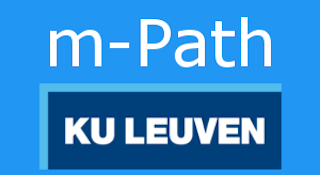Welcome to m-Path
m-Path is a free and GDPR compliant platform for practitioners and their clients who wish to implement blended care in their therapeutic process. The platform provides an intuitive and flexible framework for real-life assessment and intervention, and is entirely free to use.
- In an assessment phase, m-Path can repeatedly fire short momentary surveys to get a better understanding of the nature, causes and consequences of symptoms or complaints, and the client’s therapeutic progress over time.
- In an intervention stage, m-Path can be used to schedule and implement real-time therapeutic exercises, assignments or reminders, and to evaluate their effectiveness in the moment.
The online dashboard with all information concisely summarized in the form of intuitive timelines, charts and graphs, equipes practitioners with an excellent feedback tool to evaluate and adjust their therapy goals, and to discuss critical insights with their clients in the actual therapy session.
In the spirit of evidence-based practices, we hope to create a community of practitioners that can share, adapt, validate and ultimately improve the online assessment and therapeutic exercises for a wide array of psychological problems.
m-Path can also be used by researchers and their participants to collect online data (e.g. Experience Sampling studies).
Terminology
m-Path users
- Practitioner. A practitioner refers to a professional in a medical/health related domain, or any other field in which m-Path can provide support. Practitioners can setup questionnaires and consult the online dashboard.
- Client. A client is linked to a practitioner and only makes use of the m-Path app.
- Researcher. A researcher uses m-Path to conduct research and send surveys to participants. Researchers can set up studies, make use of the online dashboard and retrieve data.
- Participant. A participant is linked to a study conducted by a researcher and only makes use of the m-Path app.
Are you a researcher? Visit the documentation on Researchers & Participants.
Interactions
A type of interaction determines how the information is displayed to the client. There are 3 types of interactions:
Therefore, if we talk about an interaction we do not necessarily mean a questionnaire. However, a questionnaire is the most basic and frequently used type of interaction and will be explained in the rest of this guide.
In the following articles, we cover a few basics such as how you can register to m-Path and configure your mobile device. Finally, we will explain how you can set up your first questionnaire.

Great initiative.
Possibilities of MPath are not completely clear to me.
I am interested in a medium to put a lot of education on, that allows me to push certain content to a participant at certain moments in time.
Could I make 24 buttons with goals related to diet and encourage patients each week to go through the education (no exercises, psycho-education) of a goal? The sequence of the goals would depend on the patient.
Can a pop-up refer participants to certain content?
How much information can be added behind each button?